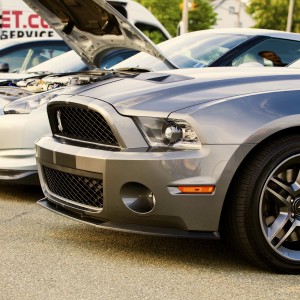Branding is the visual and verbal representation of a company or product, distilling its practical features with the emotional benefits into a succinct value proposition. Ninety percent of everything we buy is based upon emotion. It’s why we desire the $70,000 BMW when all we need is the $8,000 pre-owned Toyota.
the emotional benefits into a succinct value proposition. Ninety percent of everything we buy is based upon emotion. It’s why we desire the $70,000 BMW when all we need is the $8,000 pre-owned Toyota.
Your personal brand is no different. You have a set of practical features—your dossier, if you will—of your experience and skills.But how do they translate into emotional benefits and a personal brand?
Think about our car example above. From a practical standpoint, both automobiles are 99.9% similar when it comes to features such as wheels, steering wheel, engine and doors. Sure, the BMW may have wider wheels, which makes it corner better, and a more powerful engine, which makes it go faster, but in the end we’re really talking about slim margins. How fast do you really NEED to go?
The same branding concepts used to sell products apply to professionals who strategically need to be recognized for their specific attributes, skills and, of course, intangibles.
In her article for Forbes magazine, “7 Things You Can Do To Build An Awesome Personal Brand,” Shama Hyder, founder and CEO of The Marketing Zen Group, outlines seven things you can do today to build a personal brand:
Define who you are and how you want to be perceived. Be authentic and true to you—don’t borrow someone else’s brand. If the automobile has a four-cylinder engine, it’s not a muscle car.
Set up Google Alerts for your name and monitor it on a regular basis. If your name is common, use a middle initial or middle name to differentiate. For car companies, it’s like reading Car & Driver or Motor Trend.
LinkedIn is great, but a simple, two-or-three-page personal website is one of the best ways to rank for your name with search engines. Yep, every car brand has its own website.
Create and curate content, including blogging and social media, that’s in line with your brand. Post original content or commenting on posts from others. Ford licenses its logo for clothing and miniatures, expanding and deepening its brand reach.
We’re tempted to make funny remarks, but everything you post contributes to your personal brand. Be deliberate and strategic. In 1989, Ford considered a new car model built by Mazda to wear the Mustang name badge. When fans complained about the radical change, they released the redesigned model as the Ford Probe.
Elevate your personal brand with strong brands like the three C’s: company, college, colleagues. Look at the school attended, groups you can join and hidden opportunities within your own company. Ford Mustang sponsoring NASCAR is a good fit. Smart Car at NASCAR is not.
Connect your brand with a story that unifies all of your passions and interests into a theme. Hyder recommends Reinventing You by Dorie Clark to get things rolling. Keep your story updated as your interests shift. Honda made the Civic larger than they did in the ’90s because people are, well, bigger than they used to be.
Hyder’s blog is worth reading, so click on the link for more details on the “7 Things You Can Do To Build An Awesome Personal Brand.” As you build your brand, keep in mind the emotional triggers that hiring managers are looking for that can make you stand out from other candidates with comparable or even better credentials. Remember, credentials are practical, but how you present the benefits of those credentials is more emotional and more valuable.